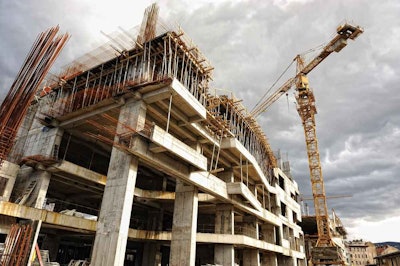
According to preliminary estimates from the Commerce Department, spending was at a seasonally adjusted annual rate of $951 billion in September.
In addition to the dip in September, the report revised downward the rates for the previous two months as well. August’s rate was originally reported as $961 billion but has been revised to $955 billion, a 0.5-percent drop from July.
Total construction spending remains up 3 percent year-over-year.
The main contributor to the monthly decrease was a 1.3-percent drop in government construction spending to $271 billion. A 4.7-percent gain in government residential spending to $5.7 billion wasn’t enough to offset a 1.3-percent decrease in nonresidential to $265 billion.
The biggest percentage drop in government spending came from highway and street construction, which fell 3.7 percent to $80 billion. Next were 3.2- and 2.5-percent drops in power, and sewage and waste disposal, respectively, to $11.6 billion and $22.5 billion.
Private spending fell only slightly, down 0.1 percent to $680 billion. Homebuilding rose 0.4 percent to $349 billion and is 0.7 percent higher than it was one year ago. Single-family home construction spending rose 1.1 percent to $192.5 billion. Apartment construction fell 1 percent to $43 billion. The homebuilding spending estimate includes improvement spending.
Private nonresidential spending fell 0.6 percent to $331 billion. The largest percent drops came from power and religious construction, both down 3.1 percent to $83.6 billion and $3.6 billion, respectively. Next was healthcare, down 2.3 percent to $27.6 billion. The largest gain in the sector was lodging, up 5.1 percent to $16 billion.
Overall residential construction spending was up 0.4 percent in September to a rate of $355 billion. That figure is up 0.7 percent from the previous year. Overall nonresidential spending was down 1 percent to $596 billion, up 4.2 percent year-over-year.










